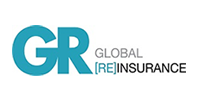Insurance Times analyses eight major commercial lines products to predict where the industry will see sustainable growth in 2026 amid challenging market forces
As the UK general insurance sector braces to tackle turbulent, cyclical market conditions, continuing technological disruptions and shifting global economic tides, one question stands out – where will the industry find sustainable profit in 2026?

To answer this question, Insurance Times has analysed eight major commercial lines products in order to predict where the bulk of gross written premium (GWP) will come from next year and which lines of business will see the fastest growth.
The core dataset underpinning this analysis, released in 2024 as part of the Bank of England’s Insurance aggregate data annual report, includes yearly statistics from 2018 to 2023, submitted by firms to meet Solvency II quantitative reporting requirements. Covering 99% of the UK insurance market, this dataset offers the most comprehensive and current view of the industry.
To predict each line’s performance in 2026, polynomial regressions were fitted to the data and the resulting trends were extrapolated forwards. This type of analysis aims to capture non-linear relationships between variables.
Motor (other) had the smallest GWP of the major commercial lines in 2023, totalling just £1.3bn across the year. Its sluggish performance over the five-year reporting period is projected to continue into the immediate future, with a £0.1bn decline in the most recent year leaving it forecast to see no meaningful growth by 2026.
Employers’ liability insurance, in contrast, has seen strong growth in recent years and looks set to maintain this trajectory. After a poor performance between 2018 and 2020, the line rallied and climbed from £1.4bn GWP in 2020 to £2.7bn in 2023. Projections have it set to add another £0.2bn between 2025 and 2026, finishing on a total of £3bn in yearly written premiums.
Commercial motor liability and the miscellaneous category ‘other’ – covering lines of business that are not otherwise explicitly defined – have likewise been projected to continue their growth trajectories. Finishing 2023 with a GWP of £3.4bn, motor liability is predicted to obtain an income of £3.7bn by 2026. The ‘other’ category is set to see one of the highest growth rates in commercial lines, finishing 2026 with a GWP of £4bn, up from £3.1bn in 2023.
Public and products insurance has experienced a mixed performance over the five-year reporting period, initially falling from £5.8bn GWP in 2018 to £4.7bn in 2020, before climbing steadily to £7.7bn in 2023. That variability led to a projected income of £7.1bn in 2026, a short-term drop that would nonetheless represent a £2.2bn uptick since 2018.
A steadier growth rate was achieved by marine, aviation and transport insurance, up from £7bn in 2018 to £11.5bn in 2023. This reliable performance led to a strong future growth forecast, with the line estimated to finish 2026 with £12.6bn GWP.
Likewise, professional indemnity has grown from £7.6bn in 2018 to £12.5bn in 2023 – and is forecast to hit £15.7bn in 2026.
Commercial property insurance – the most profitable commercial line in 2023 – has posted strong growth in every year except 2019. This consistent performance has led to a predicted 2026 GWP of £30.6bn, up from £27.2bn in 2023 – the largest absolute increase in this dataset.
While cyber insurance has traditionally been too small to feature meaningfully in the Bank of England’s historical dataset, it is now one of the fastest growing commercial insurance lines.
Data from Morningstar DBRS published in July 2025, for example, reported that the cyber insurance market saw an compound annual growth rate (cagr) of 16% over the last five years. This makes the product a significant growth opportunity for brokers and insurers over the coming years.

He graduated in 2017 from the University of Manchester with a degree in Geology. He spent the first part of his career working in consulting and tech, spending time at Citibank as a data analyst, before working as an analytics engineer with clients in the retail, technology, manufacturing and financial services sectors.View full Profile
Hosted by comedian and actor Tom Allen, 34 Gold, 23 Silver and 22 Bronze awards were handed out across an amazing 34 categories recognising brilliance and innovation right across the breadth of UK general insurance.























































No comments yet